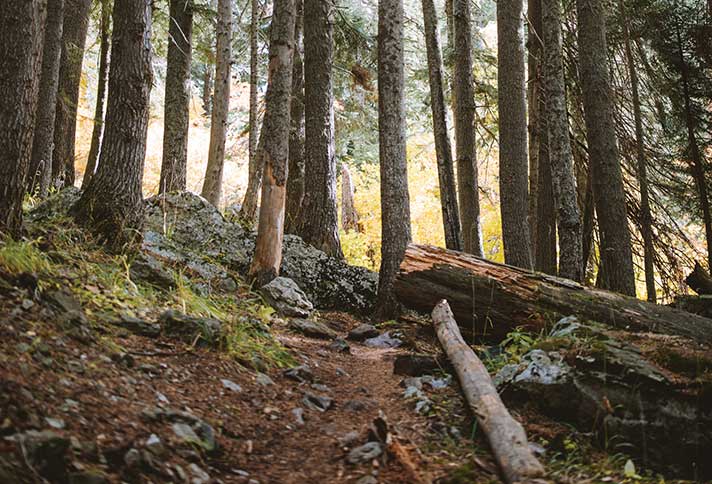Trail Talk – September 2021
Returning to the familiar footpaths of one’s local environment after forays far and wide creates a certain deja’ vu. To return to a familiar stomping ground while the temperatures persist in the triple digits, just like the day you left, yields a feeling far more poignant than any “been there, done that.” It’s the stuff nightmares are made of—a “Groundhog Day” of seared tonsils and sunburnt lips.
We have been privy to the vagaries of a changing climate with persistent drought and heat waves. We’ve inherited the spiral of a drier valley creating higher temperatures, which lead to an even drier valley. The catastrophe of a year ago replays in our fevered dreams, and we hope for a resolution to our dilemma. Please be careful out there.
This summer has brought wildfire to more of our forest lands and consequently trails have been closed and/or burnt over. Each new fire start finds us scrambling to remember how the now-charred landscape looked when last we visited there. The meadows and sage steppe will recover sooner. Many old-growth trees can survive ground fire with their thick bark. But the younger forests, especially in the “tree farm” locales will be tragically incinerated.
We want to return to these places when the fires are gone, to see the recovery of what once we enjoyed. In our local mountains, fall and winter rains and snow bring forth tender shoots that attract wildlife. Spring brings the wildflowers, many species more profuse after fire has removed competition. And, yes, just being out and about when it’s cool and wet in contrast to today’s weather should bring hope to legs wanting to stretch out and travel—in the words of Coyote, “Going there, going there.”
Recently, while out and about, my vehicle was clouted, the driver’s window smashed and valuables stolen during a thorough ransacking of the interior. Sadly, I know this has happened to others in our local woodland parking areas, and frustratingly, the culprits seem impervious to consequences. Besides a lack of integrity and a simple moral compass in this crime, damage leading to the victim unable to get help is particularly heinous. One would hope that one could trust others to do the right thing.
And that’s the key here—trust. We trust when we head out on a trail that the maps and signage are correct and in good order. We trust that the other folks we meet on the trail are friendly and courteous. We trust that the agencies responsible for the upkeep of our trails are diligent. We trust that others will obey signs.
As for the wild things, we trust that the rattlesnakes and bears will decide to be somewhere else when we come across them. We trust that the little Pacific wren along Shade Creek Trail will be flitting about as we hike through. We trust that the Washington lily (named for Martha, by the way) will bloom along Cantrall Creek every June. And we trust that this hot spell will end.

 Trail Talk is a monthly column by Clayton Gillette about hiking the Jacksonville Woodlands trail system. For more information, please visit the Jacksonville Woodlands Association website at
Trail Talk is a monthly column by Clayton Gillette about hiking the Jacksonville Woodlands trail system. For more information, please visit the Jacksonville Woodlands Association website at